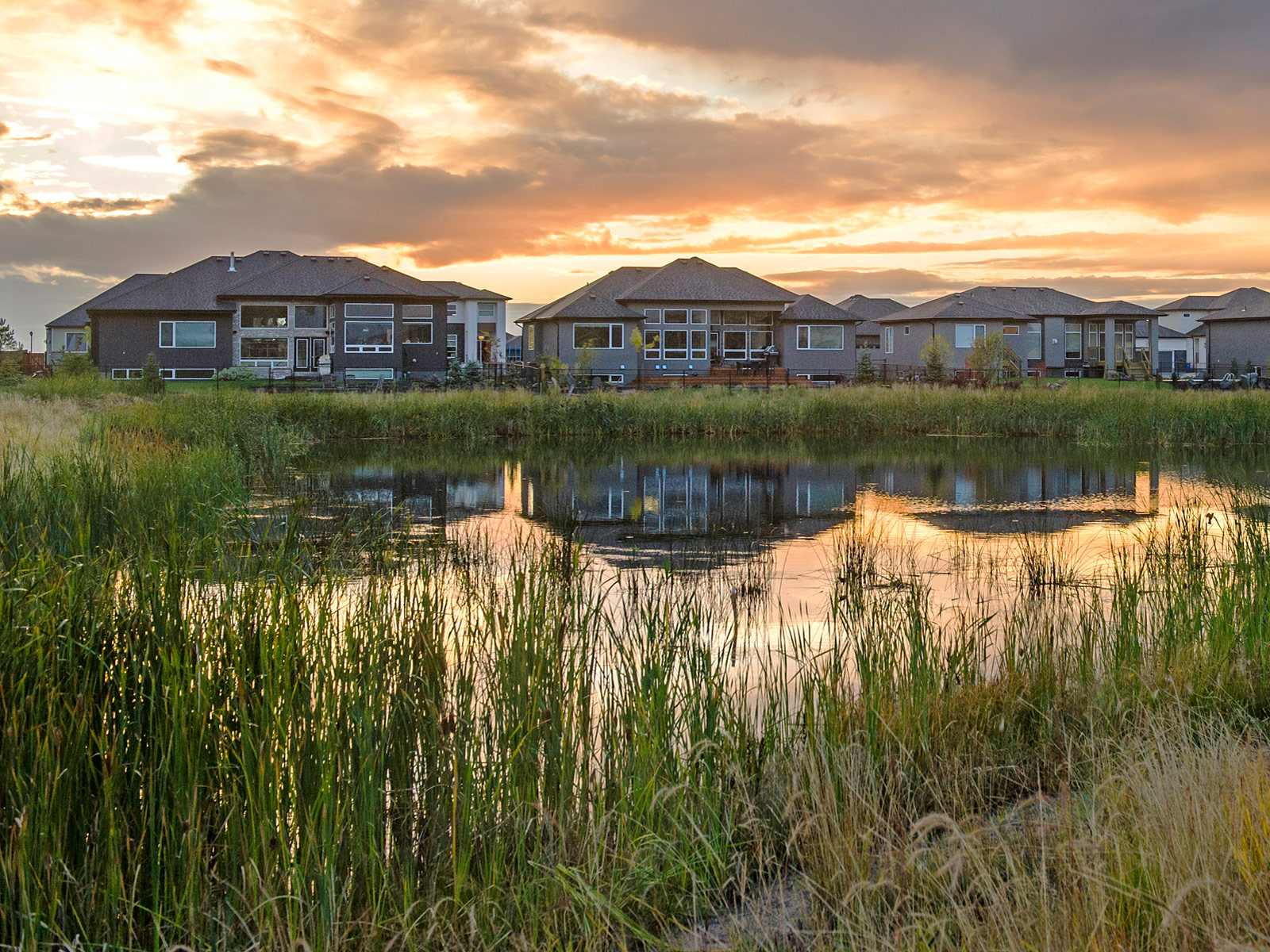Powerful ecosystems — Protecting our water resources
Wetlands act as natural sponges that absorb flood waters.
They buffer our coastlines from rising tides and extreme weather. The plants that grow in wetlands filter and clean the water that moves across the land and enters our lakes and rivers.
Now, more than ever, their ability to provide solutions to our most pressing water issues demands recognition—and action.
On World Wetlands Day, join us and commit to conserving these vital ecosystems.
Why wetlands matter
Watch the videoThey clean it.
Case study: St-Pierre-Jolys, Manitoba
When the town of St-Pierre-Jolys began using a constructed wetland to clean water flowing from its lagoon, water tests showed that phosphorus levels dropped significantly.
- Phosphorus in the lagoon water was more than 70% higher than allowed by provincial guidelines
- Phosphorus in the wetland-treated water dropped to be 97% lower than allowed by provincial guidelines
- The water released from the wetland contained significantly less phosphorus than the river it flowed into
Source: Native Plant Solutions


A grassland haven for the bobolink
Ontario farming family restores bird habitat on their land to help species at risk.

A homecoming for fish
After 200 years, conservation projects help native fish species make their way back into PEI waters
They help protect us from flooding.
Case study: Camrose Creek, Alberta
Research shows that wetlands, serving as natural infrastructure in this central Alberta watershed, provide ecosystem services and environmental benefits at an estimated value of:
- $1.25 million in flood protection
- $1.8 million in social benefits
- Approximately 900,000 tonnes of carbon stored
Source: Pattison-Williams, J.K. 2018. A Business Case for Wetland Conservation in the Camrose Creek Watershed.


Back roads of the boreal
A new guide will help industry build better, wetland friendly roads in Canada’s northern forest

Big Grass Marsh repairs completed
New agreement leads to action at Duck Factory No. 1.
They protect rivers, lakes and beaches from algae blooms.
Case study: Restored wetlands in southern Ontario
Current research near Lake Erie is showing that restored wetlands are “phosphorus sinks,” removing excess nutrients that can cause blue-green algae outbreaks. The eight wetlands in the study all receive surface-water runoff from agricultural fields. Early findings include:
- Overall reduction by 59% of the most problematic form of phosphorus
- Three of the wetlands reduced phosphorus by 93-99%
Source: Determining the Nutrient Retention Capacity of Newly Restored Wetlands in Southwestern Ontario


Delta: A Prairie Marsh and its People
Authors Glen Suggett, Gordon Goldsborough and members of the Delta Marsh History Group share rich history and fascinating tales about the Manitoba marsh.
Media Resources
Materials to support your coverage of
LETTER TO THE EDITOR
Read the letter to the editor from DUC CEO Karla Guyn
VIDEOS
Download embed links to our video highlighting the services wetlands provide that protect our water resources:
Wetlands and Clean Water video
CONTACT AN EXPERT
We can put you in touch with national and local science and conservation professionals with expertise in wetland ecology, flood/drought mitigation, waterfowl and wildlife.
Downloads
Download these concise infographics and factsheets to share on social media:
